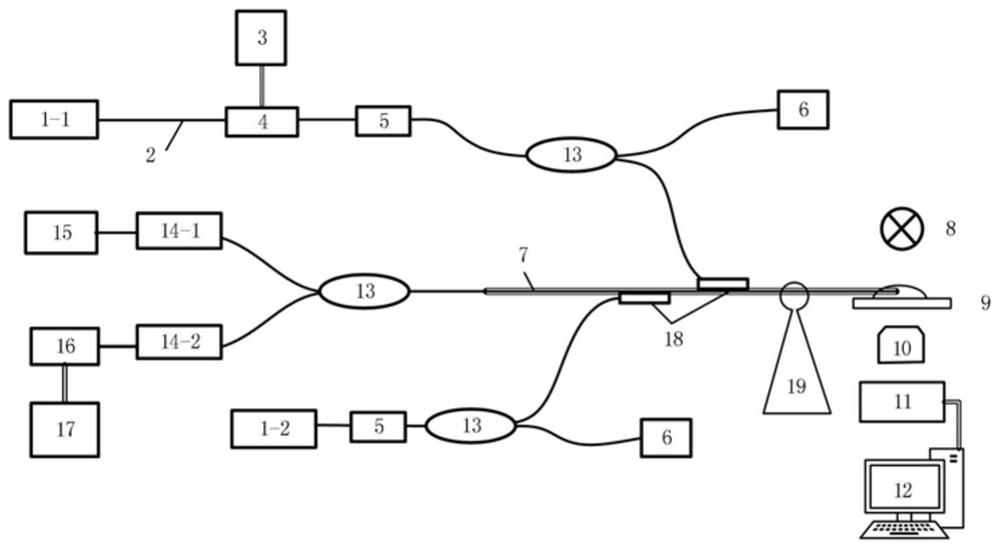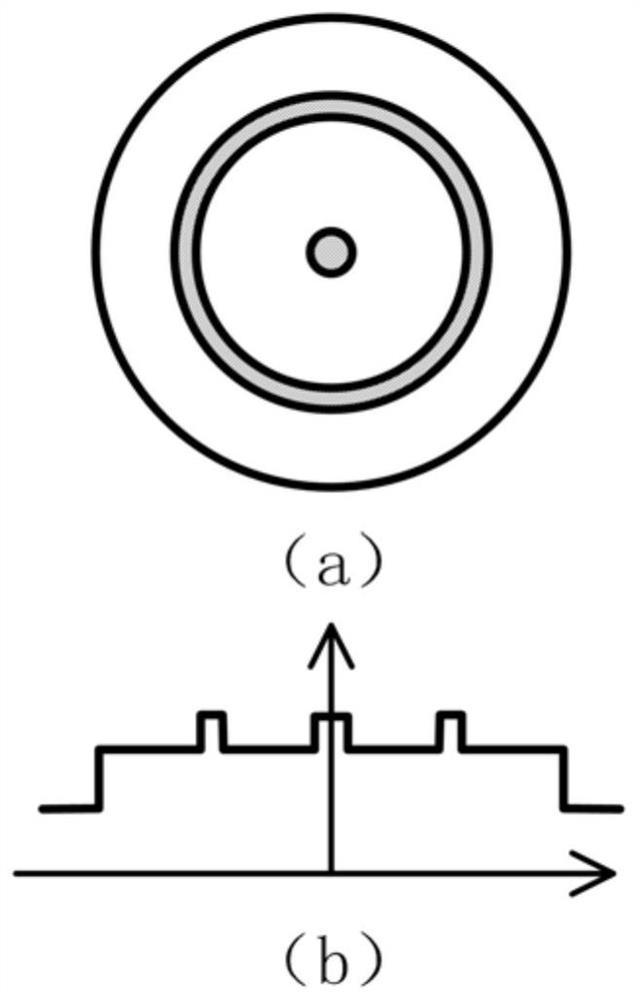In vivo single-cell multifunctional spectrometer based on coaxial dual-waveguide fiber
A multi-function spectrometer and dual-waveguide technology, which is applied in the field of single-cell multi-function spectrometers in vivo, can solve the problems of hindered concentration difference and low substance content, and achieve rapid analysis in vivo, high integration, and high operational flexibility. Effect
- Summary
- Abstract
- Description
- Claims
- Application Information
AI Technical Summary
Problems solved by technology
Method used
Image
Examples
preparation example Construction
[0051] The side throw coupler 18 can be used Image 6 The preparation method is prepared, and the prepared side throwing coupler has good long-term stability. The preparation steps are:
[0052] (1) Preparation of V-groove: According to the parameters of single-mode fiber and coaxial dual-waveguide fiber, determine the amount of side throwing, and prepare V-shaped quartz grooves of appropriate depth and shape according to the amount of side throwing;
[0053] (2) Fix the optical fiber and polish it: place the optical fiber stripped of a section of the coating layer in the groove, fix it with UV-curable glue with good stability, fix the two kinds of optical fiber in the V-groove of their respective parameters, and polish the optical fiber To the upper plane of the V-groove and polished;
[0054] (3) Coupling adjustment and glue dispensing packaging: using the method of real-time power monitoring through light, in a special packaging device, the coupling alignment adjustment a...
Embodiment 1
[0057] Example 1: Acquisition of single-cell mass spectrometry:
[0058] The wavelength of the capture beam 21 is 980nm, the wavelength of the interrogation beam 22 is 1310nm, and the two beams of light are jointly passed into the ring core of the coaxial dual waveguide fiber 7, such as Figure 8 (a) shown. The incoming 980nm capture beam 21 , the capture beam 20 is totally internally reflected at the truncated cone, and converges at a distance from the end face of the optical fiber to achieve a deep capture potential well, and single cells 20 are captured. Then, through the function generator 3, a cosine signal with a frequency continuously adjustable from 1 Hz to 1 GHz is given to the light intensity modulator 4, so that the captured light beam 21 captures the light intensity I in a quasi-static state. trap based on having an AC modulation with a cosine, such as Figure 8 (b) Shown on the left. The cosine-modulated light intensity can not only capture the single cell 20 q...
Embodiment 2
[0059] Example 2: Acquisition of single-cell Raman spectrum:
[0060] Such as Figure 9 As shown, the Raman excitation beam and the single-cell capture beam 21 are the same beam, and a 980nm capture light source is used. The light beam is coupled into the annular core of the coaxial dual waveguide fiber 7, and the light intensity modulator 4 controls the light intensity to be constant, such as Figure 9 (b) Shown on the left. The capture light beam 21 is reflected and converged by the frustum of the cone, not only to capture the single cell 20, but also to excite the Raman spectrum of the captured single cell 20 due to the high energy density of the converged capture beam 21. The backscattered Raman signal light 23 is collected and transmitted through the intermediate core of the coaxial dual-waveguide fiber 7, and after the Rayleigh scattered light is filtered out by the optical filter 14-1, it is input into the Raman spectrometer 15 for analysis to obtain its Raman signal ...
PUM
 Login to View More
Login to View More Abstract
Description
Claims
Application Information
 Login to View More
Login to View More - R&D
- Intellectual Property
- Life Sciences
- Materials
- Tech Scout
- Unparalleled Data Quality
- Higher Quality Content
- 60% Fewer Hallucinations
Browse by: Latest US Patents, China's latest patents, Technical Efficacy Thesaurus, Application Domain, Technology Topic, Popular Technical Reports.
© 2025 PatSnap. All rights reserved.Legal|Privacy policy|Modern Slavery Act Transparency Statement|Sitemap|About US| Contact US: help@patsnap.com



